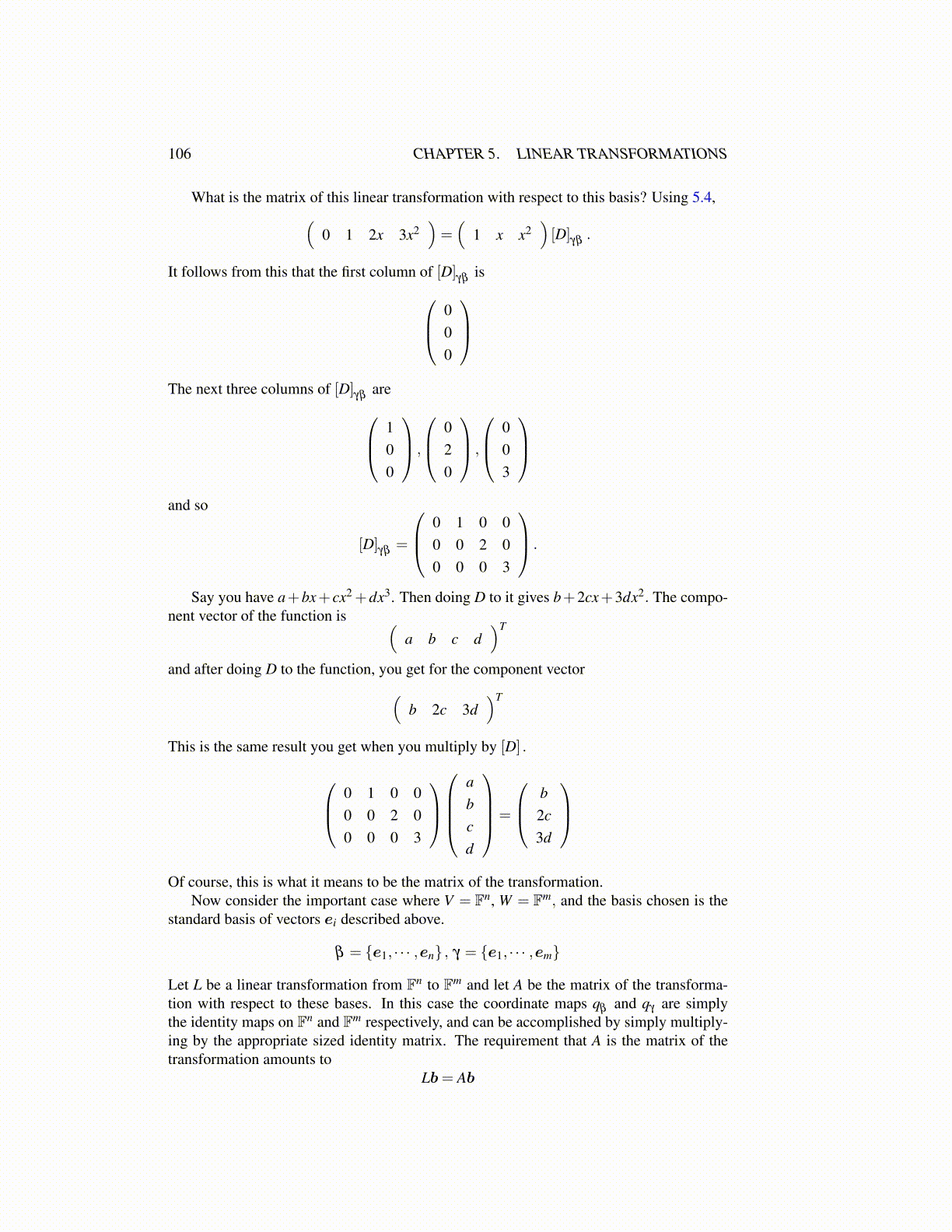
106 CHAPTER 5. LINEAR TRANSFORMATIONS
What is the matrix of this linear transformation with respect to this basis? Using 5.4,(0 1 2x 3x2
)=(
1 x x2)[D]
γβ.
It follows from this that the first column of [D]γβ
is 000
The next three columns of [D]
γβare 1
00
,
020
,
003
and so
[D]γβ
=
0 1 0 00 0 2 00 0 0 3
.
Say you have a+bx+cx2 +dx3. Then doing D to it gives b+2cx+3dx2. The compo-nent vector of the function is (
a b c d)T
and after doing D to the function, you get for the component vector(b 2c 3d
)T
This is the same result you get when you multiply by [D] .
0 1 0 00 0 2 00 0 0 3
abcd
=
b2c3d
Of course, this is what it means to be the matrix of the transformation.
Now consider the important case where V = Fn, W = Fm, and the basis chosen is thestandard basis of vectors ei described above.
β = {e1, · · · ,en} , γ = {e1, · · · ,em}
Let L be a linear transformation from Fn to Fm and let A be the matrix of the transforma-tion with respect to these bases. In this case the coordinate maps qβ and qγ are simplythe identity maps on Fn and Fm respectively, and can be accomplished by simply multiply-ing by the appropriate sized identity matrix. The requirement that A is the matrix of thetransformation amounts to
Lb= Ab